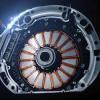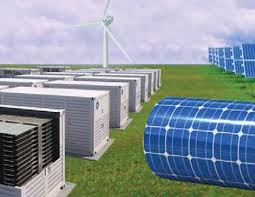
Breaking News
 Panicked Biden Aide Neera Tanden Now Claims "Every Time" She Used Autopen...
Panicked Biden Aide Neera Tanden Now Claims "Every Time" She Used Autopen...
 #563: Losing Our Rights In The Palantir World Order | Jason Bassler
#563: Losing Our Rights In The Palantir World Order | Jason Bassler
 Dave Smith vs Alex Berenson On Israel Tonight, Live
Dave Smith vs Alex Berenson On Israel Tonight, Live
 Virginia Giuffre's Family Outraged by Ghislaine Maxwell's Transfer...
Virginia Giuffre's Family Outraged by Ghislaine Maxwell's Transfer...
Top Tech News
 The mitochondria are more than just the "powerhouse of the cell" – they initiate immune...
The mitochondria are more than just the "powerhouse of the cell" – they initiate immune...
 Historic Aviation Engine Advance to Unlock Hypersonic Mach 10 Planes
Historic Aviation Engine Advance to Unlock Hypersonic Mach 10 Planes
 OpenAI CEO Sam Altman Pitches Eyeball-Scanning World ID to Bankers
OpenAI CEO Sam Altman Pitches Eyeball-Scanning World ID to Bankers
 New 3D-printed titanium alloy is stronger and cheaper than ever before
New 3D-printed titanium alloy is stronger and cheaper than ever before
 What is Unitree's new $6,000 humanoid robot good for?
What is Unitree's new $6,000 humanoid robot good for?
 "No CGI, No AI, Pure Engineering": Watch Raw Footage Of 'Star Wars'-Style Speeder
"No CGI, No AI, Pure Engineering": Watch Raw Footage Of 'Star Wars'-Style Speeder
 NASA's X-59 'quiet' supersonic jet rolls out for its 1st test drive (video)
NASA's X-59 'quiet' supersonic jet rolls out for its 1st test drive (video)
 Hypersonic SABRE engine reignited in Invictus Mach 5 spaceplane
Hypersonic SABRE engine reignited in Invictus Mach 5 spaceplane
 "World's most power dense" electric motor obliterates the field
"World's most power dense" electric motor obliterates the field
 The Wearables Trap: How the Government Plans to Monitor, Score, and Control You
The Wearables Trap: How the Government Plans to Monitor, Score, and Control You
Flow battery could make renewable energy storage economically viable

Though there are huge lithium-ion battery installations from the likes of Tesla that can store energy harvested from renewables like wind and solar, they're not exactly cheap. The USC researchers looked to an existing design that stores energy in liquid form.
In the so-called redox flow battery, a positive chemical and a negative chemical are stored in separate tanks. The chemicals are pumped in and out of a chamber where they exchange ions across a membrane – flowing one way to charge and the other to discharge.
Though such systems have previously used expensive, dangerous and toxic vanadium and bromine dissolved in acid for their electrolytes in the past, we have seen recent designs that replace those with organic or more environment-friendly alternatives.
For its design, the USC team used a waste product of the mining industry and an organic material that can be made from carbon-based feedstocks, including carbon dioxide, and is already used in other redox flow batteries.



